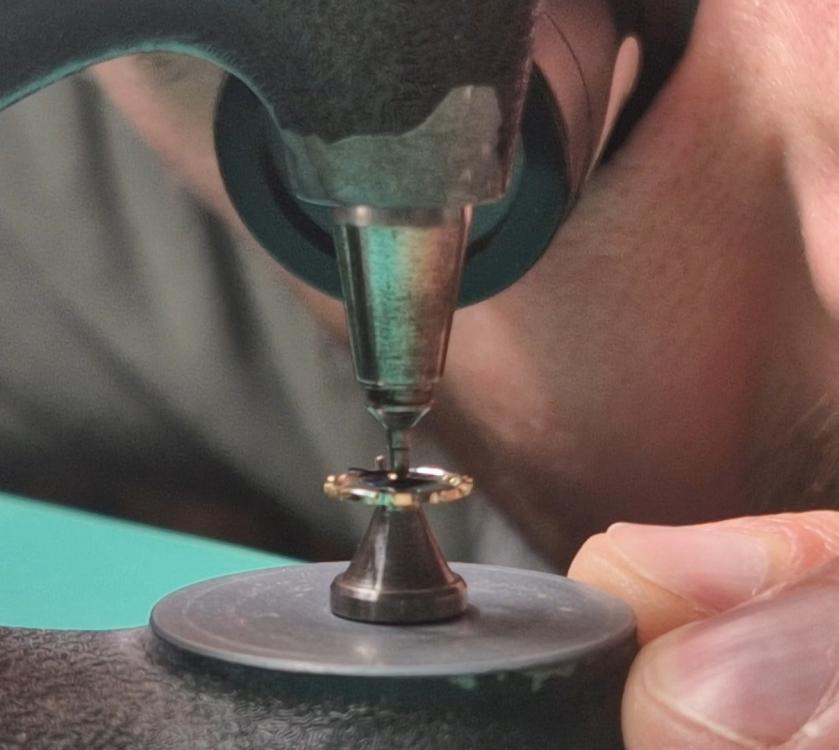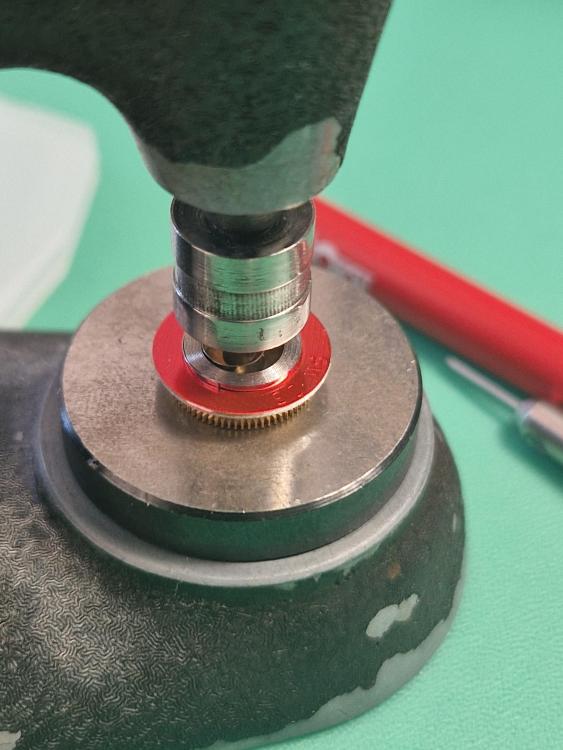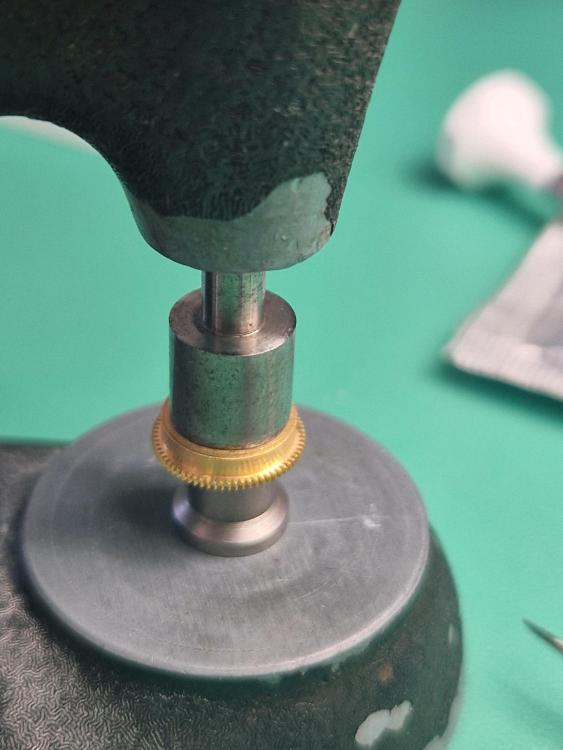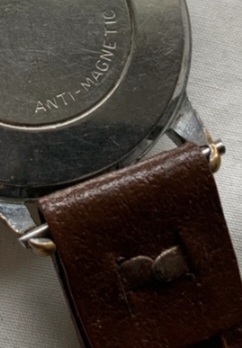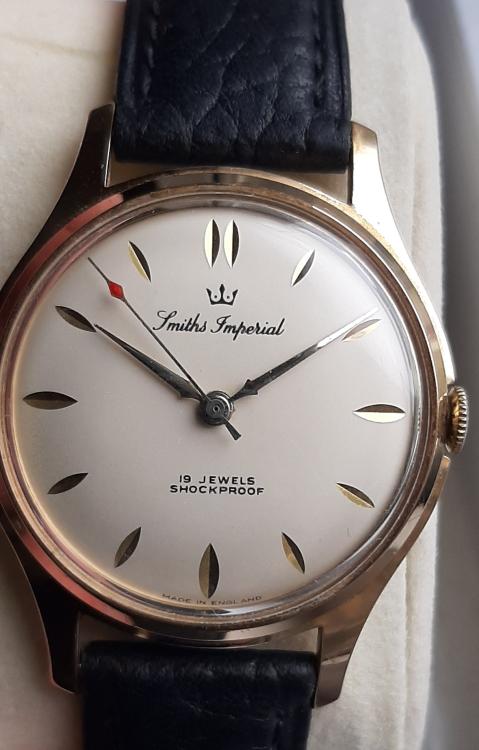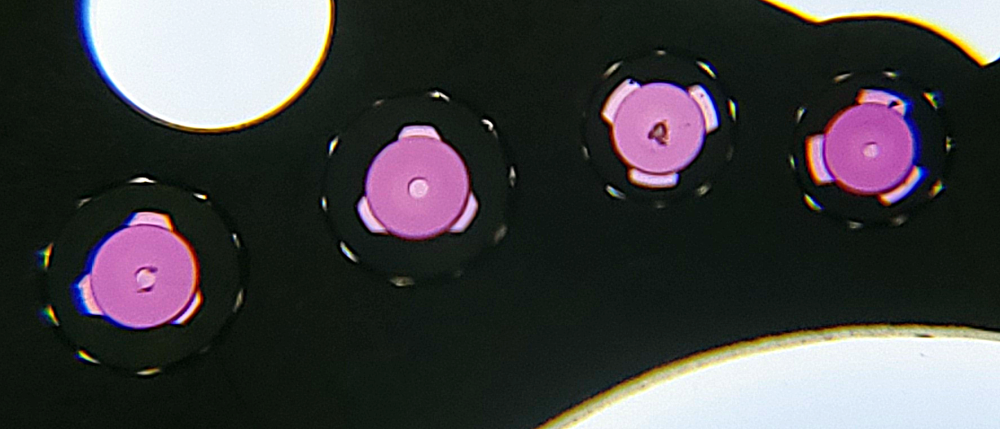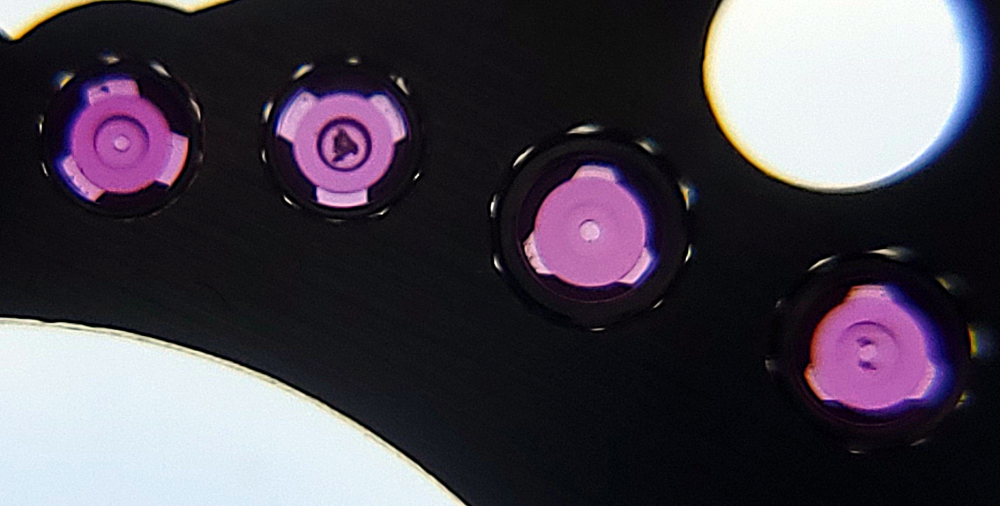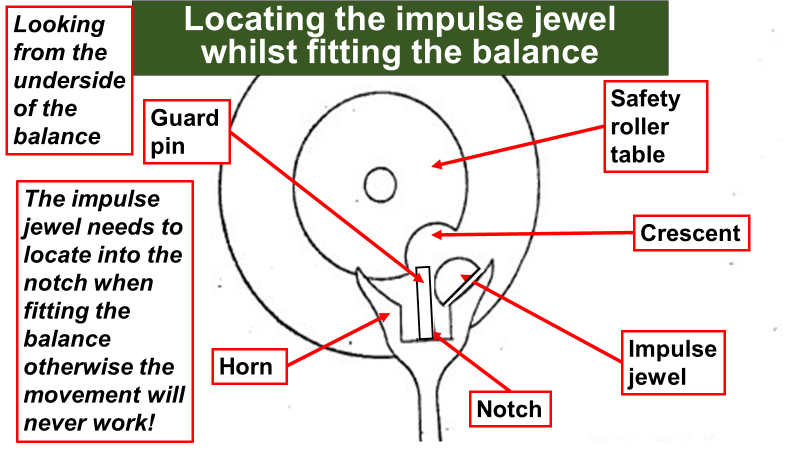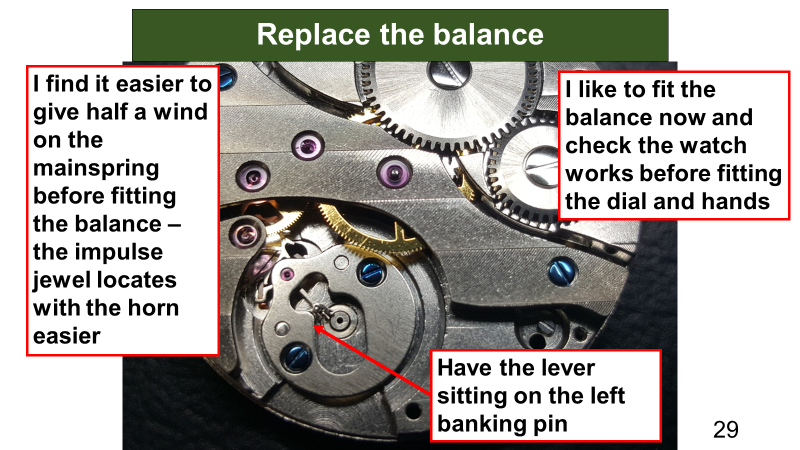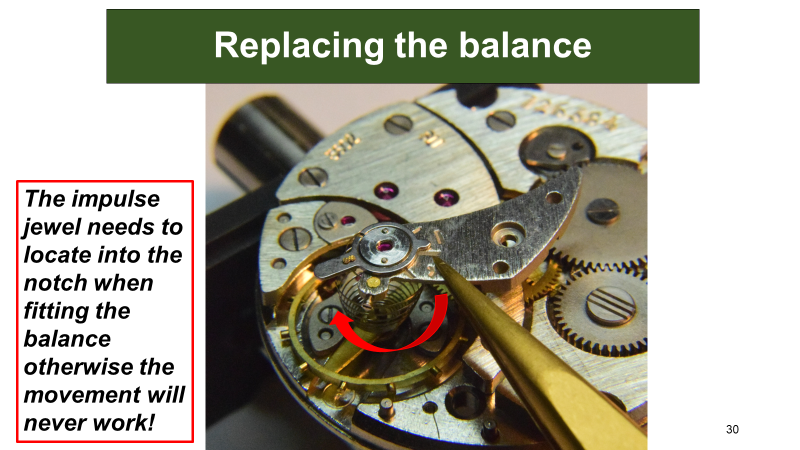Leaderboard
Popular Content
Showing content with the highest reputation on 06/01/23 in all areas
-
In order to start learning my Jacot tool and select the right size bed, I wished for a Seitz jeweled pivot gauge. Sadly, the prices asked for these gauges are astronomical. Currently on eBay from €350 and way upwards to over €500 !! Wild West prices In my Seitz jewel-box I had a "complete" range of jewels 8,9,10,11,12,13,14,15,16,17,18 & 19 in the OD size of 110 and 20,22,24,26,28, 30 & 32 in the OD size of 120. Marked 27x spots (1x1cm distance) on 10cmx10cm, 1mm thick copper-sheet and drilled them out with a 1mm drill. The holes for the jewel sizes 8-19 were reamed to 109 and the other holes reamed to 119. Cut the "to be jewel-gauge" at the size of 10x4cm, polished it and inserted the jewels; Left the holes open for the "missing" jewels; 21, 23, 25, 27, 29 & 31 and there are two more slots empty for 33 & 34; Whether I'll ever need these bigger sizes? They weren't in the Seitz jewel-box, perhaps for a reason? If I ever stumble over these sizes, I can insert them, the holes are already there. Those "missing" bigger sizes are also easy & safely to measure with a micrometer or gauge-caliper. For now, I have a jeweled pivot-gauge with a full range from 8/100 to 20/100 and from 22/100 to 32/100 in steps of 2/100, I think enough for making a start on my Jacot-tool Next, to finish this project off, is to find some small metal-stamps to number the jewel sizes.......4 points
-
3 points
-
Do-Hicky = Whatcha McCallit On a serious note ....ish. Being away for a short time, and it being my 75th today, means that I have a few pence left. I have purchased my last ebay items for the foreseeable future . An eye loupe, so I can use the microscope better. A 3 oiler pot that has closing lids, sick of hairs. 2 watches which I made silly offers on and amazingly they were accepted (I'll post photos when they arrive) 1. Vintage Angel 15 Rubis Antimagnetic Molla Infrangibile. 2. RARE DOXA wristwatch with Synchron cal. 41 (ETA cal. 2750) from 1960’s. Time to get serious with the hobby me-thinks. Ross3 points
-
2 points
-
2 points
-
I tend to think it's a manufacturing defect. Sometimes it may be a minor alignment issue other times things aren't just not quite the right size. But it becomes very scary if you grasp you're having a problem with the plates you take out all the wheels in try to fit the plate requires a lot of force then the likelihood that your Going to have a successful happy day decreases dramatically. Did you know there's a golden rule that you never modify the watch to fit the replacement parts. This even came up a discussion somewhere else that went to modify the balance arm to fit their new staff which was probably wrong. For any of us that had to deal with the watches been modified we do not have happy thoughts about the person who did the because now it's a nightmare to deal with the problem but what about modifying the watch so that it fits better? I think somewhere recently were discussing pin devices and one of the pin devices I bought earlier my life I didn't like because it comes together as a nice though basically Lake took the circular part and they just cut and X through it and the inside edges are very sharp and it's not the best for holding round things. It's why like the barrel arbor pin devices better for holding round things. But why is it become one of my most useful at times pin vice because it can do something. If you want I can get pictures. I find that if things don't fit right not the part but the watch itself doesn't fit right because the posts is steady alignment pins don't seem to do right I take my pin vice and grab the post or pin as tight as I can and I turn in the sharp edges of the pin vice gently planes off of very minuscule amount of metal. And then I tried the plate again and then the plate fits fine it's not too loose so don't take off too much metal you just take off the hair of metal in fact a here is probably too thick and now the plate fits without having to risk breaking things. Don't know if that violates the Golden rule are not the golden rule is don't modify the watch for the replacement part but I'm just modifying the watch so that the plates will go together without snapping all the pivots Off.2 points
-
If its good enough for Jacques its good enough for me. The old boy kept me well entertained when i was a kid. ( please please dont even go there Tom , you know it will be very wrong ). Very nice Ross, the Doxa dial is a little modern for me but the Angel has decade earlier look about it and the brand sign is really nice.2 points
-
Do a done testing in a Swiss lake and determined that orange was the best colour for a dive watch dial. so the story goes, they were used extensively by the Cousteau dive teams. Tom2 points
-
Yes- I use my jewel press much more for other things than for jewel-pressing, and for many things that would normally be seen as tasks for the staking tool. It's a truly useful tool! And becomes more so if you can turn up various pushers and stumps on the lathe.2 points
-
To add to the confusion, on some old calibers, but still very 20th century, the winding is through the "rocking bar" system, and there there is a ratchet wheel on the dial side of the barrel, and, sometimes a second one on the movement side, in some cases with squares but no threaded hole (the ratchets are held captive by the mainplate and/or barrel bridge).2 points
-
Yes, but, if the arbor can go in the barrel either way, with the square and threaded hole peeking out the barrel or the lid, you still don't know which way it goes in.2 points
-
2 points
-
Are these also called sliding pin vices? I got mine from Cousins for £3.50, but needed to refashion the last 5mm of the jaws from 90 degree sharp corners by removing 0.5mm at a 45 degree angle. The gripping surfaces are therefore flat (not ideal but better than sharp corners). The "cutting" was done with a fine diamond file. Spreading the jaws out was done with a shard of hardwood. The hardest part was holding the workpiece. I'm a novice watch butcher, so please feel to ridicule.2 points
-
1 point
-
Get yourself some acupuncture needles less than a tenner for a box of a hundred. The diameter ranges from 0.3mm down to 0.18mm the points are extremely small and thin. They fit very easily into the workings of the movement and small enough to seperate the coils of a hairspring. Their uses are endless.1 point
-
Ever since I lost a crown while wearing a watch I always at least try to remove the crown. If I can't get the crown off by holding the stem in a pin vise and then using moderate force with my other hand, then I will leave it on the stem and clean as a unit. If it comes off then I clean separately and loctite the crown after cleaning.1 point
-
Correct, it's just like WAS (watch acquisition syndrome) where you need "just one" more mechanical watch and your heart will be at peace... but then you see something else, and then you have this difficult issue of how do you keep all of the mechanical's running at one time because you can't wear them fast enough in rotation to keep them all running without spending more money on a winder. Or at least makes your wallet feel like you own a genuine Rolex Maybe stir the tea with a Bergeon piece of pegwood... it will taste so much better with Bergeon pegwood than generic pegwood.1 point
-
Ok, I've always wondered about the skirt part. Do you wear skirts on the weekend?1 point
-
My first clock was a Smiths striking mantel clock from around 1950. I only have everyday tools but found that long-nosed pliers and an electrician's screwdriver came in very handy. I found this forum and YouTube very useful. I would avoid, for now, clocks where the mainspring has gone - you need a machine to tackle that!1 point
-
Depending upon the watch the crown is supposed to be Loctite to the stem and normally wouldn't remove this unless you are replacing it. Then I've heard it suggested that running a waterproof crown through the cleaning machine is undesirable. Just can't quite remember why it may be that the silicon greases get in the cleaning fluid which is bad or the gaskets don't like to be in the cleaning fluid. So basically can leave the stem in crown out of the cleaning fluid if you're concerned1 point
-
I would like to have some advice on this as well. I think from previous threads that o1 tool steel can be easily machined and then the important bits hardened, I.e. a punch for a staking set, only harden the business end of the punch. I seem to remember someone here talking about that. Tom1 point
-
Nice i love the old 40s and 50s Doxa dials. Trivia coming up the great underwater filmographer Jacques Cousteau was a big fan of the Doxa 300T diver. In fact he had input into its design and the distinctive orange dial which was claimed to be the best colour visually underwater. That also housed an ETA movement and being released in 1967 the year i was born is my grail diver's watch.1 point
-
I am German, but this word made my laugh so hard By the way, I'm thoroughly enjoying my Seitz press. I haven't used it for any jewels, but for as many other applications as possible It gives me much pleasure - putting the hairspring collet back on the balance staff safely and evenly: - putting a mainspring into the barrel - closing the barrel:1 point
-
I appreciate you taking one for the team! I've got a Horia-style tool at home, so I'll try it out after work tonight. Thanks to everyone for the suggestions. Even you, @RichardHarris123 This was actually going to be my next try. Since I own a brewery, I have a scary amount of concentrated sodium hydroxide on hand. My only concern was whether it would attack the soft brass. A few moments of research says it reacts with copper alloys, so I'm inclined to avoid it.1 point
-
1 point
-
OK matey , but First chance I get , I take and send you picture of his Smith dials.1 point
-
I cant answer that Joe as the watch remains unpurchased. I appreciate your effort but take it no further please, I've just looked at the watch again and the spring bar holes have worn completely through both lugs on one side. Cleverly hidden by an extra wide strap, i spotted something and asked the seller to confirm and post a close up. I very much appreciate the thought to source for me Joe.1 point
-
Ah ok. Sorry i dont know if this adds to the confusion but to clarify things for myself. The way up of the arbor is determined by the ratchet wheel which can only be in one position to interact with the click. If we know which way up the arbor is then we know which way it winds up the mainspring so we know how the mainspring is to be mounted if there is no indication in the barrel. What we dont know 100% of the time is if the barrel is lid up or lid down. But generally we do because its gear teeth are usually off centre and mesh with the center wheel pinion. My giddy aunt watchie what has your simple question started A lot of old Oris 40s and 50s are like this with rocker bar winding. The ratchet wheel sits in the mainplate but under the barrel, the click is on the dial side. The arbor has no hole .1 point
-
Yes, they would. The question though was: "Is it possible to determine which way the mainspring should be mounted in the barrel if all we have is the barrel, the lid, the spring and the arbor?" Yes, if the bearing in the lid and the bearing in the barrel have different diameters (or differ in some other way) we can decide how the arbor should sit in the barrel. And, as the ratchet wheel can only be fitted on one side of the arbor, the matter is settled. Genius! It can't matter!?!? Ultimately, from a practical standpoint, taking a picture (or making a note) of the barrel with spring and arbor mounted when it is being opened is the way to go, but I felt it was an unusually interesting thought challenge on my journey to better understand how mechanical watch movements work.1 point
-
On many barrels the hole for the arbor is different for the barrel and the lid, so you can determine the arbor orientation that way, and thus the spring orientation. Otherwise, as mentioned already, you want to look at the interaction of the barrel teeth and center pinion- but on some calibers, like the El Primero, the teeth are squarely in the middle of the barrel, and, the cap and barrel have the same size holes for the arbor! So without another barrel to check, it's a guess, but ultimately I wonder if it would really matter?1 point
-
That was my conclusion as well which I wished to have confirmed by a professional, which I now have. Thanks Ok well thats confused me now. Won't the surrounding components show which way the arbor turns ?1 point
-
1 point
-
I'm sure that these settings are able to be taken apart, but I've never done it. I think you would press out the pair cap/hole jewel, then they are two separate pieces, each jewel in its setting. I have a 218 here for service but it's my mom's and don't really want to experiment on it... haha. But maybe I'll give it a go. Edit- it's one setting, you push the hole jewel and it pushes out the cap.1 point
-
@Neverenoughwatches I have seen NOS or LN astral dials in my late watch repairer's estate. Educate me of specifications of the dial you want please, I may could surprise you with a brand new dial for cheap. What caliber is under the hood, I'd look it up. Joe1 point
-
You are doing very well the better you get it the better the clock will preform. One can only do ones best.1 point
-
I agree, they all look x1000 worse under high magnification, even the pristine ones. On your wrist without your reading glasses it will look awesome!1 point
-
Has to be a joke there about p#ss and losing wood....1 point
-
If the price is good I would go for it, or you'll regret it, especially if it fills a hole in your collection. I would do a sympathetic restore and just use flitz or similar on the case and a new worn looking strap and re-lume with tinted (coffee??) lume. This way you'll keep the watches rustic charm and the dial won't stick out like a sore thumb. As for the dial I would only remove any dust/debris etc and wouldn't go any further than that as you may end up snatching defeat from the jaws of victory.1 point
-
1 point
-
Some components of every watch ( unless an unusually designed watch )will only ever move in the same direction, clockwise. Conveniently the first component that energises the watch, the stem. And one of the last components that uses that energy, the center wheel. Both easy to recognise and trace back to the barrel functioning.1 point
-
How about a clarification of the word angle? We are currently looking downward which is not overly helpful. Sideways and at least two different locations with a bonus of can we see the bottom.1 point
-
Okay so if I interpret the question correctly if we look at the mainspring barrel only can we tell which direction to put in the mainspring? Then they want to make this more fun it has to be an automatic watch otherwise On a nonautomatic there would be a hook some form that would be the same giveaway as the armor. Then the answer would be no you can't tell. Because you have no reference at all. Then because barrels come in all different shapes sizes and gear placements in other words they could have their teeth in the middle or on the top or the bottom depending upon the watch that's not very helpful. It's a Seiko watch you don't even have a stem the wind the watch sometimes. The easiest way then would be to place the barrel in the watch and look at how it drives the center wheel. Unless we have a backwards running watch the center wheel goes in one direction.1 point
-
After reading this thread I started using my horotec pin vices this week with the round tooth insert, see earlier posts. I must admit that they make a big difference, no more fighting with tweezers to get the arbor in or out of the mainspring coil, and then pinging it across the room. It even makes it easier lubricating the little thing. Who knew?!?1 point
-
Because you simply can't live without it. I even sleep with mine. Then of course the brand name, Bergeon, which makes you feel like you own a genuine Rolex. Absolutely!!! Don't waste another second. Order one, or even a few different sizes, NOW!1 point
-
1 point
-
And I came here to help manage my pathological tool envy disorder. Damn it!1 point
-
No, these are specific tools (having a slider though), but it's definitely not the only tool that can be used to handle mainspring barrel arbors, but perhaps the most convenient (and most expensive ). And, congrats on making your own arbor holder tool!1 point
-
It's easier to turn the movement in the last slide, rather than the balance, to locate the impulse jewel with the horn/notch It also depends which way the impulse jewel enters the notch to replace the balance, dependent on if it is a clockwise or counter-clockwise balance. A clockwise balance sweeps in a clockwise direction to the movement and vice-versa1 point




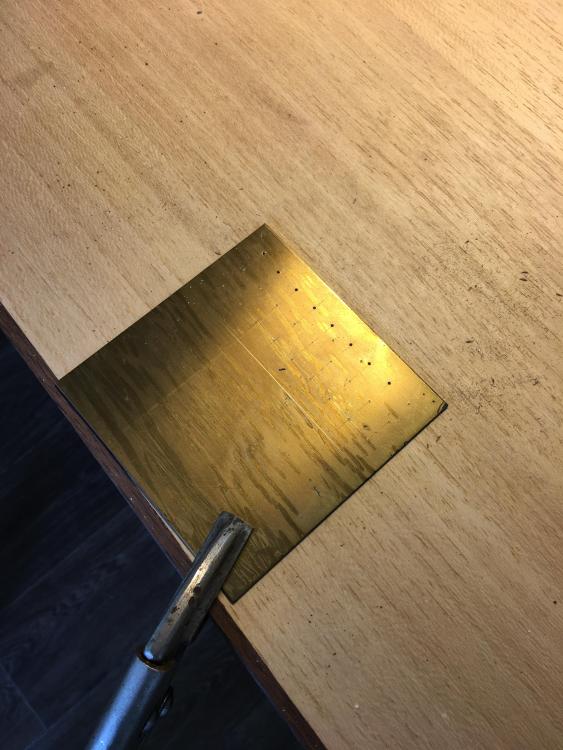
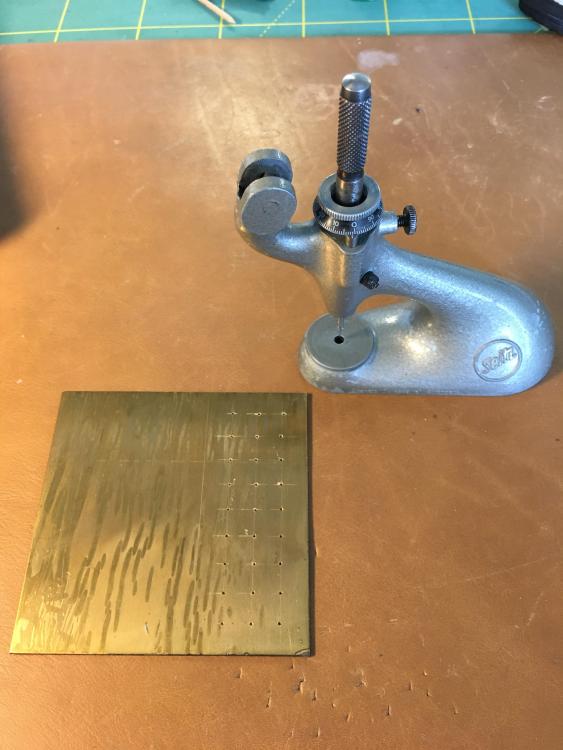
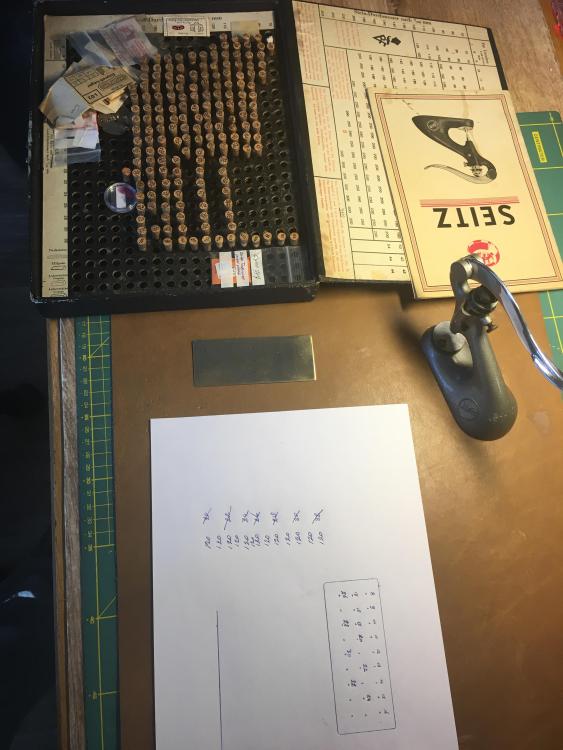
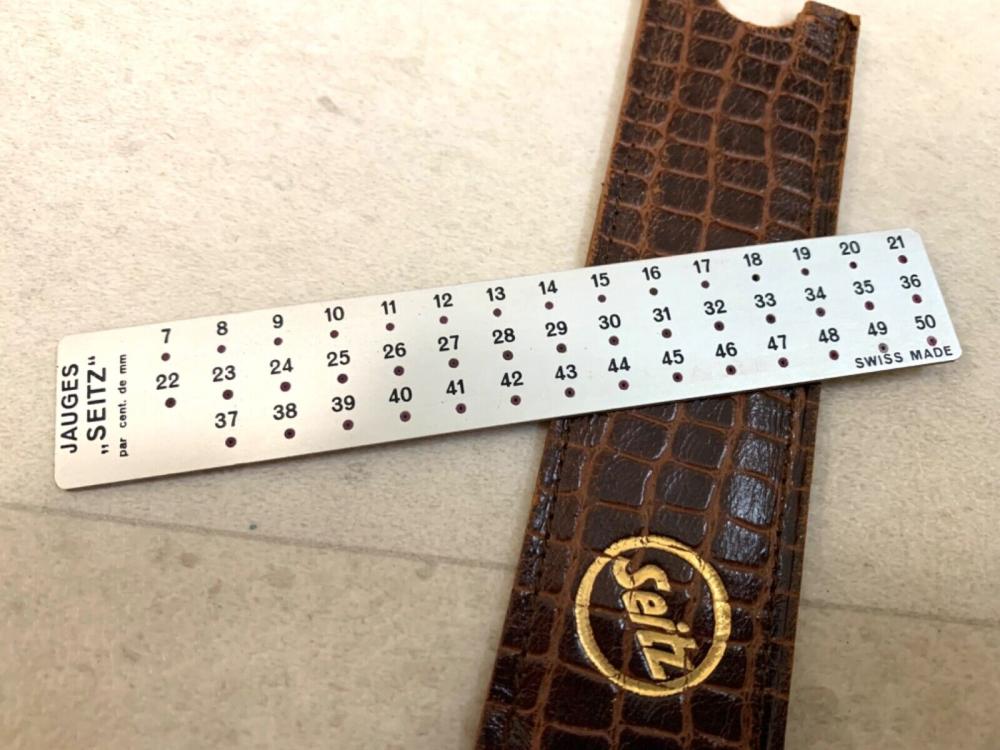


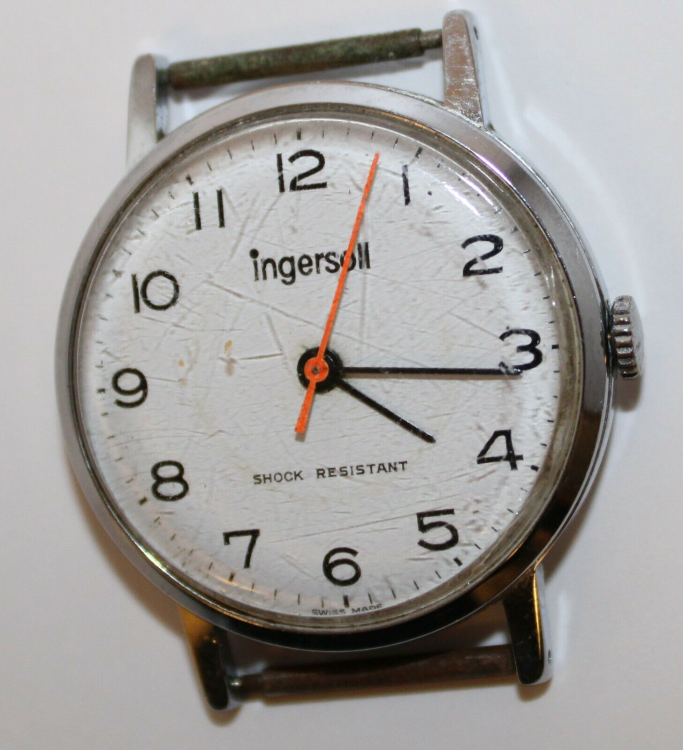

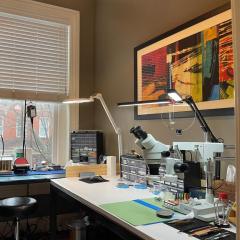
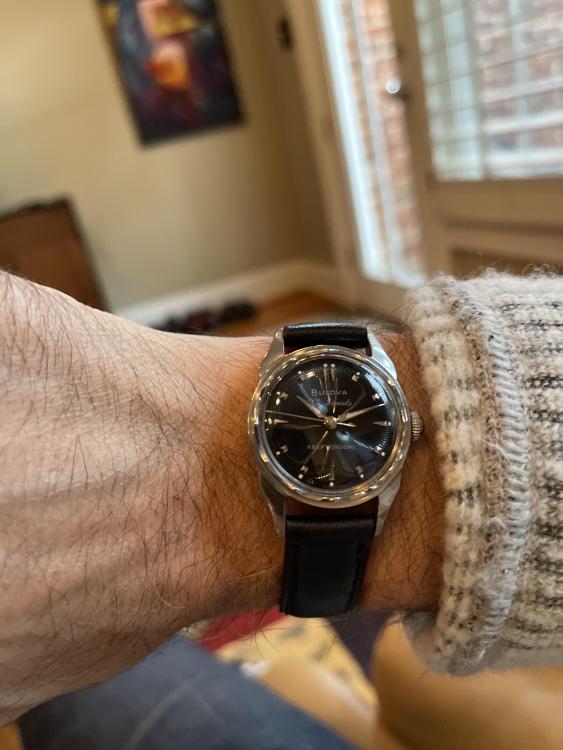








.thumb.jpg.cb17a66989f1e796fd4217db2e9ca9df.jpg)
